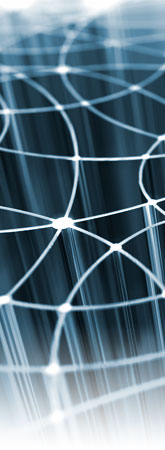Virtual Reading List
The DL.org Virtual Reading List, which was compiled for the Autumn School in October 2010, offers a valuable web-based guide not only to key DL.org outputs, such as the DL.org Digital Library Reference and Technology and Methodology Cookbook, but also on foundational articles and papers exploring digital library developments by leading figures from Library and Information Science and Computer Science.
The Digital Library Reference Model, April 2011
The Digital Library Reference Model has been produced by the European funded project DL.org by enhancing and extending the Reference Model of the DELOS Network of Excellence. The Reference Model provides a roadmap enabling players in the DL space to share a common understanding and follow the same route when dealing with entities in this complex universe.
The Reference Model comprises three, self-contained sections:
- Digital Library Manifesto
- Digital Library Reference Model in a Nutshell
- Digital Library Reference Model Concepts & Relations
- Digital Library Conformance Check List
The DL.org Digital Library Technological and Methodological Cookbook, April 2011
The innovative Cookbook comprises a portfolio of best practices and pattern solutions to common issues faced when developing large-scale interoperable digital library systems. The Cookbook is designed to facilitate the assessment and selection of the solutions presented, enabling professionals working towards interoperability to define and pursue the different steps involved. It provides:
- The Interoperability Framework
- Insights into organisational, semantic and technological interoperability
- Best practices and solutions across the six core concepts: content, user, functionality, policy, quality and architecture
- Interoperability scenarios
This State-of-the-Art survey has been produced by the DL.org Working Groups as a starting point for their investigation into different perspectives on digital libraries’ interoperability, and is a work in progress.
A. Paepcke, C. K. Chang, T. Winogard, H. Garcia-Molina, Interoperability for digital libraries worldwide, Communications of the ACM, 1998, 41(4), 33-42,
This paper presents a broad introduction to the issues of interoperability, suggesting factors that may be used in evaluating related solutions and providing an overview of solution classes.
C. L. Borgman, Challenges in building digital libraries for the 21st century, Lecture Notes in Computer Science, 2002, 2555, 1-13
The author summarises the key-challenges of 21st century digital libraries taking into account the technical, social and organisational context.
IDABC, European Interoperability Framework for Pan-European eGovernment Services, v1.0, EC (2004)
This document provides recommendations and defines generic standards with regard to organizational, semantic and technical aspects of interoperability, offering a comprehensive set of principles for European cooperation in eGovernment.
M. A. Goncalves, E. Fox, L. T. Watson, N. A. Kipp, Streams, Structures, Spaces, Scenarios, Societies (5S): A Formal Model for Digital Libraries, ACM Transactions on Information Systems (TOIS), ACM Press, 2004, 22, 270-312
The authors propose the fundamental abstractions of Streams, Structures, Spaces, Scenarios, and Societies (5S), which allow us to define digital libraries rigorously and usefully. Streams are sequences of arbitrary items used to describe both static and dynamic (e.g., video) content. Structures can be viewed as labeled directed graphs, which impose organization.
Tony Hey, Stewart Tansley, Kristin Tolle (eds.), The Fourth Paradigm: Data-Intensive Scientific Discovery, Microsoft Corporation (2009). Part 4 “Scholarly communication” 175-220
Increasingly, scientific breakthroughs will be powered by advanced computing capabilities that help researchers manipulate and explore massive datasets. The speed at which any given scientific discipline advances will depend on how well its researchers collaborate with one another, and with technologists, in areas of eScience such as databases, workflow management, visualization, and cloud computing technologies. Research is evolving from small, autonomous scholarly guilds to larger, more enlightened, and more interconnected communities of scientists who are increasingly interdependent upon one another to move forward.
Duncan Birrell, Gordon Dunsire and Kathleen Menzies, Online Catalogue and Repository Interoperability Study (OCRIS), Final Report (2009)
The aims of this study are to investigate and report on the: extent to which academic repository content is already held in library OPACs; interoperability of OPAC and repository software for the exchange of metadata and other information; various services offered to institutional managers, researchers, teachers and learners respectively by OPACs and by repositories; potential for improvements in the links from repositories and/or OPACs to other institutional services, such as finance or research administration; development of possible further beneficial links between library OPACs and institutional repositories.

